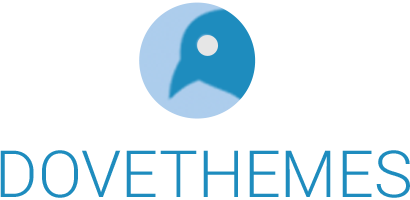The human brain is a costly part of the body. For instance, it consumes 25% of the organism’s oxygen, while it makes just about 2% of the body’s mass. As a survival mechanism, the brain is sluggish – most of the things it does unconsciously. It defines elements, marks them, and then overlooks them until the moment it needs them once again.
And while the brain’s love for lazy floating in the human head makes survival simpler for it, things get more complicated for UX designers. User experience design is based on user research, creation of personas, and attempts to predict how people will use a product. But, how do you research something that a study subject doesn’t perceive?

Recently, several neuroscience techniques have moved forward, providing UX design agencies and designers with a new understanding of things that promote so-called “fast thinking.” For example, one can study perception and attention via eye-tracking cameras, the emotional response can be identified using facial analysis or skin sensors, and electroencephalography might measure the brain’s electrical response.
While all of that sounds cool, most designers know – or at least they think they know – that the user’s attention has to be captured within a fraction of a second. But, this is why we’re talking neuroscience here: just as it helps diagnose issues, it is also a useful tool for revealing best practices and most effective solutions in UX design. Read further to find out about several of the most helpful neuroscience tips UX designers can use in their work.
1. Identification Has to Be Simple
Every user lands a website or opens an app with at least some expectations of what it should feel and look like. If UX designers manage to stay close to that expectation, they benefit from immediate subconsciously made decisions.
Users usually want to know the solution they start using:
- If it has what they’re looking for;
- If it is a high-quality product or service.
Creating simple designs that keep the brand and services/products at the center allows people to adjust themselves. By focusing on users’ attention on some information, you don’t let other things get in the way. Therefore, getting rid of the noise in a design is just as crucial as repositioning its elements.
If you take a look at current developments among tech companies, you will notice a shift to simpler, more minimalistic interfaces. Such designs have proven to work better compared to more complicated interfaces in terms of task completion, whereas their visual simplicity makes a significant impact on buying decisions.
Moreover, scientific evidence showed that visually clear and straightforward designs show better results. Once again, the lazy brain can easily understand the purpose of a site or app and decide on what action it should take next.
2. Imply What’s to Be Expected
Preparing the user for upcoming interaction or information is a sure way to improve the end-user’s capability to understand and react to that new information. You can prep the user to foresee such things, as UI elements, timing in some processes, or particular interactions. Some apps use additional screens to notify users that they are about to go to third-party websites, for example. Some include further context to alert the user regarding new information architecture or design patterns.
This user preparation has two sides to it, however. Information you don’t want to convey may still affect the user’s decision making. For instance, if your photo company only shows kitten images, the end-user may wrongly assume that you only take pictures of animals or even just cats.
3. Adapt to Lazy Readers
Today we have access to eye-tracking studies that can track a person’s look during their interaction with a service or product. We can create heat maps displaying the period a user spent focused on a particular screen area or can project how the gaze moves around the screen or page.
The brain is known to scan apps and sites for information in a so-called F-pattern, sometimes called E-pattern. It merely means that the person sees the info at the top of the page or screen, then reads to the right, and then proceeds to scan down the page in search of the needed information or relevant icons. If you break the F-pattern, it will make the data harder to find (for instance, if you put it in the bottom right corner of the page/screen).
Subdue the Text
According to research conducted by Nielsen Norman Group, users only read about 20% of the text available on a page. Moreover, on websites that have more content, users spent only about four extra seconds for every additional 100 words of textual content.
Therefore, in today’s environment, where users don’t read text word-for-word, you should consider the following tips for scannable text:
- Make bullet lists;
- Highlight keywords;
- Create meaningful subheadings;
- One paragraph should commit one idea;
- Consider using the inverted pyramid pattern and start with the conclusion;
- Cut the word count of writing in two (or more).
Make Use of Color Contrast
The way you arrange and locate text on the page or app screen is just the tip of the iceberg. Color theory, contrast, and weights are also great tools in directing end-user attention.
For instance, the design team behind NASA’s cockpit has used luminance to help focus the pilot’s attention in an area full of miscellaneous information. The team has used color and contrast to provide the most significant elements with visual distinction.
Contrast and luminance can be used in a product to emphasize or deemphasize particular information. However, calls-to-action and button designs most frequently use it. Furthermore, these are just the first step. According to the color theory, the dominant color should appear in 60% of elements, secondary – in 30%, and accent color – in 10%. This pattern is consistent with the neuroscience of what attracts the eye. Since the accent color appears the least of all, it draws the most attention.
Thus, just as bright color can draw attention to it, muted colors may help users tell secondary information from what is truly important. For instance, most new sites have footer areas that feature neutral tones, drawing the line between the information in them and the rest of the webpage. By deemphasizing the irrelevant or not-as-important information, you will help the end-user focus on the most crucial information or interactions in the app or website.
Use the Mind to Excel at UX Design
As we find out more about the neuroscience behind user experience, design rules will continue to transform throughout the industry. If you want to stay ahead of competitors, it’s necessary to understand the user in more ways than just data collection through regular user research. Great UX designs address the brain faster than the user acknowledges. If you learn to create such designs, your projects will always be oriented toward success.
